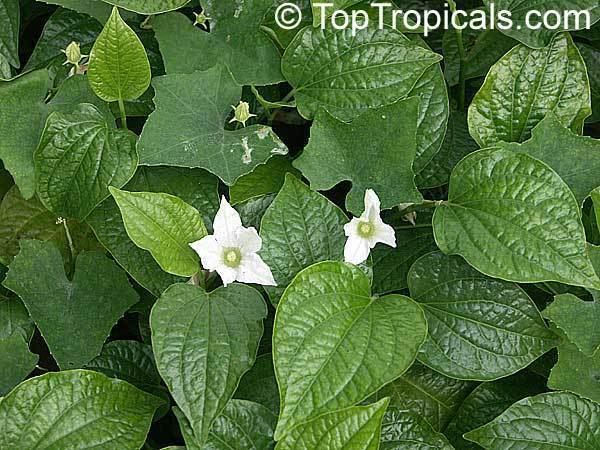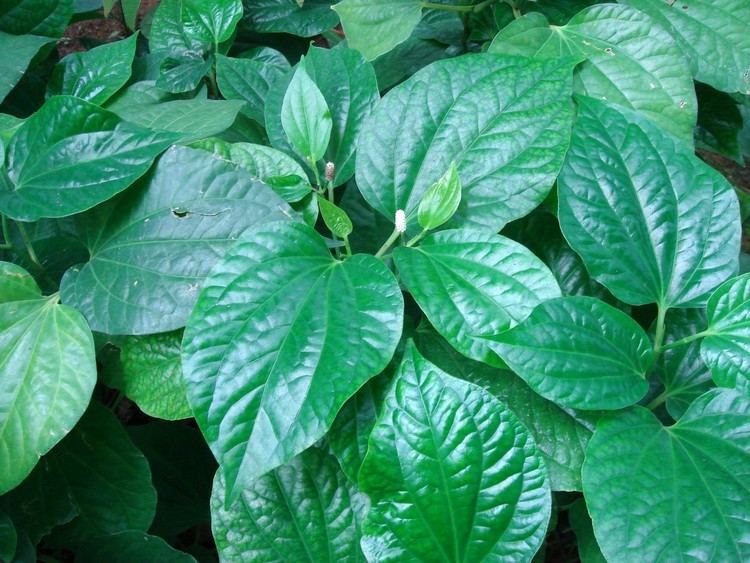Scientific name Piper sarmentosum Rank Species | Genus Piper Higher classification Pepper | |
 | ||
Similar Betel, Vietnamese coriander, Piperaceae, Beefsteak plant, Culantro | ||
Piper sarmentosum and piper betle
Piper sarmentosum is a plant in the Piperaceae family used in many Southeast Asian cuisines. The leaves are often confused with betel, but they lack the intense taste of the betel leaves and are significantly smaller.
Contents
- Piper sarmentosum and piper betle
- Names
- Description
- Geographic distribution
- In cuisine
- Traditional medicine
- References
Piper lolot (lolot) is now known to be the same species. Under this name it is cultivated for its leaf which is used in Lao and Vietnamese cuisine as a flavoring wrap for grilling meats, namely the thịt bò nướng lá lốt sausages of Vietnam.

Names

There is no "official" English name for it, but it is sometimes called wild betel. It is known as chaphlu (ชะพลู, pronounced [t͡ɕʰá.pʰlūː]) or cha phlu (ช้าพลู, pronounced [t͡ɕʰáː pʰlūː]) in Thai; phak i leut or pak eelerd (ຜັກອີ່ເລີດ) in Lao; and pokok kadok in Malay. In Vietnam, the local name of Piper lolot – lá lốt – is applied to P. sarmentosum also. It is also known as lolot pepper. In Vietnamese it is called lá lốt (or sometimes in the South lá lốp). In Khmer, it is called japloo ចាព្លូ (or jeeploo ជីរភ្លូ), in Thai chaphloo ชะพลู, in Lao phak ee lert ຜັກອີ່ເລີດ (or phak nang lert ຜັກນາງເລີດ).
Description

This plant is a perennial herb with creeping rhizomes, and a striped stem that grow to 40 cm high. Its leaves are thin, heart-shaped, and 8–10 cm long and 8–11 cm wide, with 5 main veins from the base of the blade, oil glands on the upper surface, and finely pubescent veins on its under side. Its petioles are 2.5–3 cm long. Erect white spikes of 1–2 cm long emerge at the axils.
Geographic distribution

P. sarmentosum is found from the tropical areas of Southeast Asia, Northeast India and South China, and as far as the Andaman Islands. Living collections of this taxon from the Andaman Islands is under ex situ conservation outside the islands at the Field Gene Bank of Jawaharlal Nehru Tropical Botanic Garden and Research Institute, Trivandrum, India. It is a pre-tsunami accession..
In cuisine
P. sarmentosum leaves are sold in bunches and are usually eaten raw.

The practice of wrapping meat in vine leaves originated in the Middle East, which was taken to India by the Persians. It was subsequently introduced by the Indians to Southeast Asia. However, grape vines do not grow well in tropical climates, so the Vietnamese started to use leaves of lolot instead. It is native to the Indochinese region and recently introduced to the United States by Lao and Vietnamese emigrants. It is also used for medicinal purposes, to relieve a wide range of symptoms from inflammation to snakebites.
Traditional medicine
P. sarmentosum leaves are used in traditional Asian medicines. Chemical analysis has shown the leaves contain the antioxidant naringenin. Amides from P. sarmentosum fruit have been shown to have anti-tuberculosis and anti-plasmodial activities.
